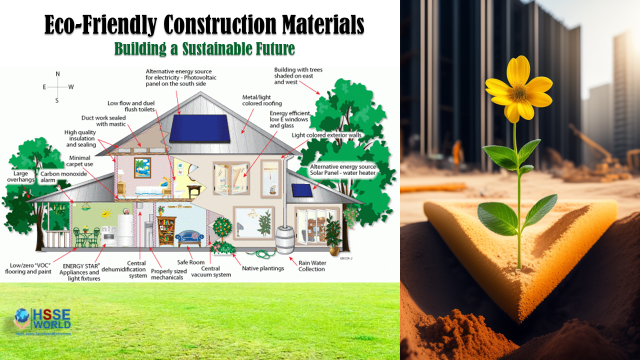Combustible dust awareness
5 min readIf a combustible dust explosion occurs, it often results in severe injuries, burns, or deaths. Employees can reduce the potential for dust explosions by being aware of the risks and following safe work practices to mitigate those risks as well as by following the company’s emergency contingency plan.
- What the definition of “combustible dust” is according to the National Fire Prevention Association.
- What are the five elements of the Dust Explosion Pentagon are?
- How dust explosions occur.
- What precautions and procedures must be taken to mitigate the risk of a catastrophic dust explosion.

Definition of a combustible dust
- Many types of dust can explode and these include not just organic materials like flour, sugar, or wood, but also inorganic materials such as some metals, paint, plastics, pharmaceuticals, and even some types of textiles. OSHA has identified more than 130 products or materials that pose a hazard for a dust explosion.
- The fact is many facilities that have processes that produce dust or fine particles may be at risk of a dust explosion, often with catastrophic results, unless precautions are taken and proper procedures are followed.
- The national fire prevention association defines combustible dust as “a finely divided combustible particulate solid that presents a flash fire hazard or explosion hazard when suspended in air or the process-specific oxidizing medium over a range of concentrations.”
The dust explosion pentagon
- First of all, what makes dust such a highly combustible fuel source? You’re probably familiar with the ingredients necessary to start a fire. They make up what’s commonly referred to as the “fire triangle.” They are fuel, oxygen, and heat.
- When talking about combustible dust, we add two more ingredients: dispersion and confinement. This is what is referred to as the “dust explosion pentagon.” In order for a dust explosion to occur, all five of these ingredients must be in place.
- Dust explosions happen when dust fuel is dispersed into oxygen reaching a sufficient level of concentration in an area of confinement and comes in contact with an ignition source: heat.
How dust explosions occur
- The scary thing about dust is that it doesn’t just burn, it explodes. That’s because the more surface area a material has exposed to air, the greater its combustibility. The dust has a much greater surface area than the same material would in a compressed, solid state.
( Everything-you-need-to-know-about-the-explosion/ )
- For example, take a sugar cube. It has a surface area of approximately 13 and a half square centimeters, but break it down into individual crystals and the surface area increases over a thousand-fold.
- Now consider the surface area when you crush those crystals into dust. The finer the dust becomes, the greater the likelihood of it exploding; however, that doesn’t mean only very fine dust poses a risk.
- A combustible substance only needs to be 420 microns or smaller to be considered an explosion risk. That’s about the size of finely ground table salt.
- An animation produced by the US chemical safety board provides a good example of how a dust explosion can occur in an industrial setting.
- Often, the initial dust explosion might be small; as the dust fuel may be limited to the immediate area around the ignition source; however, once the confined dust fuel reaches a certain level of concentration, the explosion expands and travels through vents and duct work, increasing in strength as it feeds off of the dust fuel that has accumulated in those vents.
- These chain reactions can create shock waves, which shake loose dust that may have accumulated on hidden surfaces such as overhead pipes and rafters, creating an explosion that is often far more severe. This amount of additional dust fuel can be many times greater than that which caused the initial blast.
(know more about the-common-industrial-fire-hazards-and-prevention/ )
Mitigating the risk of a catastrophic dust explosion
- So how do we mitigate the risk of a catastrophic dust explosion? Let’s go back to the dust explosion pentagon. Remember each one of those five ingredients must be present for a dust explosion to occur.
- For the purpose of this program, we’ll focus on the ingredients that we usually have the most control over. These are fuel (dust accumulation), dispersion (ways in which the dust can be mixed into the air) and heat (ignition sources).
Checking for dust accumulation
- We need to minimize the fuel, the dust, that is available. Be vigilant throughout your daily routine. Keep your work area clean.
- Frequently inspect areas for dust accumulation. It’s often the overlooked areas in a facility where accumulation occurs. When possible, check surfaces that are out of normal lines of sight such as the tops of machinery, or overhead pipes, beams, and ductwork.
- If you happen to discover specific areas where dust seems to accumulate, inform your supervisor in case additional preventative measures need to be taken.
Preventing dust dispersion
- Engineering control systems such as dust and vapor capture hoods, exhaust vents, and other air pollution control systems should be kept clean and free of obstruction.
- The risk of an explosion greatly increases when the dust fuel becomes dispersed in the air. Be sure exhaust and dust collection systems are free of leaks which can re-disperse dust back into the environment.
- Also, check compressed air and vacuum lines for leaks as these can cause localized dispersion.
- Be sure to follow proper procedures for disposing of combustible materials. Never dry sweep or use compressed air to clear away dust.
Reducing the risk of ignition
- Remember when dust fuel is in the air all it takes is one spark. Always be conscious of possible ignition sources such as hot surfaces or sparks from electrical or static discharge.
- Always clear dust from around electrical outlets and make sure power cables are free of nicks or cuts.
Know your company’s emergency contingency plan, so that in the event of an explosion, you know the correct escape routes, meeting places, and other emergency procedures.
( learn more: what-is-an-emergency-management-plan-and-what-should-be-included-in-it/)
Conclusion
Combustible dust is a very real hazard. It’s something that can destroy lives. If a dust explosion occurs it very often means severe injuries, burns, or death.
Be aware of the risks, follow safe work practices to mitigate those risks, and follow the established emergency contingency plans put in place by your employer.
If we all follow the precautions and procedures covered in this article as well as specific procedures that may be in place at your facility, we can all go home safely at the end of the day.



